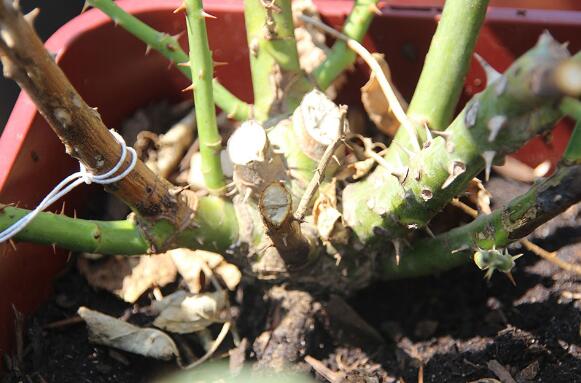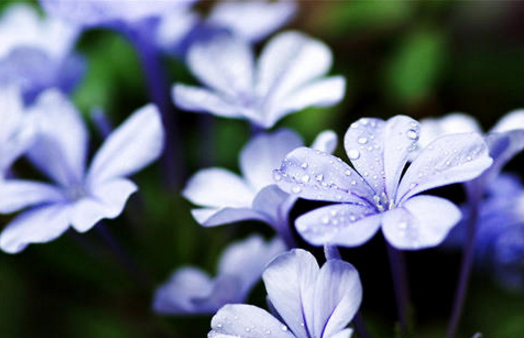How to reproduce roses? five propagation methods / cutting survival rate of roses is 100%.
Keeping a pot of roses at home is the choice of many people in the metropolis, which not only beautifies the living environment, but also is very pleasing to the eye. Getting up early in the morning to see it will be a very pleasant day. But a long time will inevitably be very monotonous, so it is necessary to breed a few more pots of roses of different colors, then how to reproduce roses? The following is by the editor to introduce five breeding methods of roses.
First, how to propagate roses, cutting is the most commonly used

Rose, originated in China, has become a world-famous flower, and many countries regard it as a national flower. For many years, roses have been cultivated by breeding experts, so many breeding methods have been handed down. How to reproduce roses, generally speaking, there are five methods of propagation: cutting, grafting, sowing, pressing and shedding.
2. Five propagation methods of roses
(1) cutting propagation
There are many ways to propagate roses, but the most commonly used and convenient one is cutting. On the other hand, the cutting propagation of roses can be divided into two kinds, namely hardwood cutting and tender stem cutting. the specific operations are as follows:
① hardwood cuttage
If it is hardwood cutting, the time should be before 2-3 months of plant germination; cuttings should choose 2-year-old strong, full, full bud eyes, disease-free branches, and cut it into 15 cm. Then apply mud to the lower end of the cuttings and insert them into the cutter.
② twig stem cuttings
If it is a twig stick, the time should be between July and August; the cuttings should select the current year's twigs, and then insert the cuttings into the cuttage bed. Generally speaking, after cutting according to the above-mentioned methods, it can take root in about 1 month, and then transplant and maintain it in time.
The choice of slotting machine
Whether it is hardwood cuttage or tender wood cutting, the cutter is extremely critical. In the method of planting roses, we have introduced that it likes loose, permeable and well-drained soil. Therefore, the cutting substrate for flower friends should be sandy soil with good permeability, perlite, metatarsal stone and carbonized rice husk and so on.
Note: in order to prevent rose cuttage from getting sick, flowers are sprayed with 500 × 800 solution of potassium permanganate and methyl topiramate to disinfect the soil, then cover with plastic film for 3-4 days.
Plug-in management
After completing the above steps, the cutting propagation of roses is basically over, but the management after cutting is also extremely important, which can ensure 100% survival rate. First of all, the temperature should be kept at 18-28 ℃; the second is light, shading when cutting, 10-15 days later, the cuttings can be gradually exposed to sunlight. Finally, watering, we should do less spray, spray frequently.
(2) Graft propagation
In addition to cutting, grafting is also a common method of propagation of roses, and its rootstocks generally choose rose or white jade tang. Grafting propagation is also divided into two kinds, bud grafting and grafting, the specific operation is as follows:
① bud grafting method: every 5-9 days, select full bud eyes on improved varieties of roses and grafting 1-2 buds on white jade tang or rose rootstocks; ② branch grafting method: branches of improved varieties of roses can be grafted on rose and white jade tang rootstocks every spring.
(3) sowing and propagation
This is a rare method of breeding roses. Seeds received in autumn are put into plastic bags filled with moist sand and put in an environment where night freezes and melts during the day. After a month, the temperature gradually increased to about 20 ℃, and the seeds could be sown after the seeds germinated, and then planted when the seedlings had 3-5 leaflets.
(4) striping propagation
Another method of breeding roses, which is usually from June to August, selects the sturdy branches of the same year, bends them into the soil, inserts them into the wound and buries them in the soil, and fix them with bamboo forks or branches, so that the tips of the branches are exposed to the ground and keep the soil moist. They can take root in 2 to 3 months, and can be separated from the mother plant in the following spring and planted separately.
(5) split-plant method
From November to December every year, after the roses are defoliated, new plants with strong growth next to the mother plant can be dug from the big flower stump, with 2 or 3 stems in each cluster and planted separately with roots. After planting, the stem was cut off from the 20~25cm above the soil surface and cultivated for 2-3 years to blossom in clusters.
With regard to the breeding methods of roses, the editor has introduced this. I believe that after reading the full text, you will be able to find a breeding method suitable for your own use. If you want to change a pot into ten pots and fill the room with roses of all colors, the scenery is beautiful, so what are you waiting for? Go and have a try!
Rose cutting method and rose cutting propagation technique
Cut the cutter into a 10-15CM oblique and upper flat shape, taking about three segments as one section, and pay attention to flattening the wound with a sharp blade.
Before cutting, the bottom of the stem can be soaked with auxin drugs if necessary, and then inserted into the substrate. After the root length is about 2--3cm, it can be transplanted.
Flower name: rose
Aliases: rose, lingering flower, assassin, heart-piercing rose, thorn rose
Families and genera: Rosaceae, Rosa
Cutting roses can not make them sprout quickly, because the branches have no external source of nutrients, germination will consume nutrients in the branches, and there are no nutrients to take root. If there are healthy and strong branches for cutting, a good start is half of success, so branches with diseases and insect pests should be avoided, while leaves with thick, developed and full leaves should contain sufficient nutrients and are more likely to be successful in cutting.
Cutting branch selection
Shoot cuttings with heel
That is, select the newly germinated branches in early spring, cut off the stem with a little wood with a sharp knife, and insert it into the cutting bed or small basin after being treated with growth hormone.
Semi-lignified wood cuttings
This method is from June to September, select the first branches of rose flowers, cut off the flower stalk, flatten its lower part, take 2-3 nodes as a segment, cut off the lower leaf, cut off most of the leaves left, and insert it in the bed under the same conditions as above after being treated with growth stimulating hormone.
Hard branch water insertion method
Select semi-woody branches or hard branches with 1-2 leaves, flatten the base with a sharp knife, insert them into a water container, soak the branches in water and place them in a place of 15 ℃-20 ℃ where you can see the sun, so that they can grow roots. During the root promotion period, the water in the container should be changed every 2-3 days, and when the epidermis of the new root on the branch becomes light yellow or light brown, it can be carefully planted in a nutrition bag for culture.
Essentials for cutting roses:
(1) choose full and disease-free branches: there are healthy and strong branches for cutting. "A good beginning is half of success". Therefore, branches with diseases and insect pests should be avoided, and leaves with thick, developed and full leaves should contain sufficient nutrients. It is easier to succeed in cutting.
(2) to prevent the invasion of diseases and insect pests: diseases should be avoided in the cutting branch medium, basin soil or in the cutting environment, such as black mildew and branch blight are easy to occur during cutting, so it is very necessary to use fungicides properly.
(3) Water management: since rose cuttings can no longer be replenished from the mother plant after cutting, adequate water should be given to avoid withering, which generally requires regular and quantitative water supply and facilities above a simple greenhouse in order to carry out commercial production. Moisture control should pay attention to the humidity in the medium and the humidity of the air, in order to maintain a thin moisture on the leaf surface without dampness.
(4) use rooting agent to promote rooting: IBA1000-2000ppm can help rose cuttings to root, it must be noted that when the concentration is too high, it will not be easy for axillary buds to sprout, so appropriate concentration can make cutting seedlings root well, in addition to the above points are necessary methods and procedures for rose cutting propagation, there are other things to pay attention to.
(5) other precautions: the middle section of the cut flower is more suitable for cuttings. The growth of 3-node and 3-leaf cuttings is faster than that of single-node cuttings, but the cost is higher. The cuttings medium can be mixed with peat soil and perlite. To promote axillary bud germination of cuttings, nutrients containing BA or cold storage can be added to break axillary bud dormancy. Cuttings can grow into seedlings for about a month in summer. It takes about 50-60 days to grow seedlings in winter. Cuttings in spring are easy to grow axillary buds and then root, thus affecting their survival rate. The use of heating bed treatment can promote faster rooting of cutting seedlings in winter and improve the propagation rate. The use of sucrose preparation can promote the survival rate and seedling quality. Trace elements Fe, Mn and Zn also contribute to the survival of cuttings.
At present, the planting area of roses in China is about 236 hectares, and farmers have to renew their planting every 3-4 years, and some farmers change to dense planting methods. Coupled with the need for potted flowers, it is initially estimated that about 6 million seedlings are needed each year. Cutting propagation provides fast and good rose seedlings, which is not only beneficial to the production of flower farmers, but also reduces the cost of production. I personally do not recommend the method of sowing to propagate a large number of roses, because the germination and growth of sowing seedlings are relatively slow, the cycle is longer, and it is prone to atavistic degradation, which will reduce the overall quality. Therefore, in addition to the need for breeding (because sowing can cause variation), asexual reproduction is generally not used.
Through the detailed introduction of this article, I hope you can gain something! Thank you for your support and attention to the succulent flower bed!
How to reproduce mountain roses? the reproduction method / sowing reproduction of mountain roses has a high survival rate.
Mountain rose is a kind of highly ornamental flower plant, and there are many people who breed it in our country. With more and more people raising it, the problems about its reproduction also make people compare, so how to breed mountain rose? What are the breeding methods of mountain roses? Next, the editor will take you to learn about it.
How to reproduce mountain roses
On how to reproduce mountain roses, in fact, mainly by sowing reproduction and cutting propagation, these two are more commonly used breeding methods of mountain roses, the survival rate is also higher, as for the operation methods of the two propagation methods are described in detail below. Let's take a look.
Second, the propagation method of mountain rose.
Sowing and reproduction
1. Seed initiation
Before sowing and reproducing mountain roses, pre-treatment is very important. We need to urge the seeds. Generally, we can soak the seeds in hot water for 1-2 days, and then take them out and sow them after they begin to absorb water and swell. This can improve the germination rate of the seeds.
two。 Sowing method
In the breeding methods of mountain roses, sowing and reproduction is a common method. When sowing, we need to sow the seeds evenly in the basin soil, then cover the soil with 1-2cm action, and then water them. Remember to water thoroughly when watering, and then the seeds can germinate after a week or so.
Cuttage propagation
1. Cuttings selection
Before cutting, we need to choose cuttings, that is, the branches of mountain roses. Generally speaking, we can choose the branches with strong growth, so the survival rate will be higher, if we choose the branches that look very weak, then we can basically declare the cuttage failure, so it is very important to choose cuttings.
two。 Cutting method
Among the breeding methods of mountain roses, cutting propagation is a relatively easy to operate. Before cutting, we can use chopsticks to cut a hole in the soil that is about the same thickness as cuttings, and then insert the cuttings into them for watering. When watering, you should have the right amount of water, remember not to cause stagnant water, otherwise it is easy to cause rotting roots. Everyone can take root 20 days after the cuttage is completed in accordance with this method.
- Prev

How to propagate Cymbidium, two propagation methods / sowing and cutting of Cymbidium
Wine bottle orchid, is a very ornamental plant, because it is very similar to the appearance of the wine bottle, has been loved by many people. If you want it to grow healthily, in addition to mastering the culture method of wine bottle orchid, the method of reproduction is also very important. In fact, how to propagate wine bottle orchid can be roughly divided into two kinds, sowing and cutting.
- Next

How to propagate blue snowflakes, propagation methods / sowing / cuttings of blue snowflakes
Blue snowflake is a common plant in people's life, which is highly ornamental. Of course, if it does not reproduce well and wither, it will lose its sense of beauty, so it is very important to master the breeding method of blue snowflake. What are the breeding methods of blue snowflake?
Related
- Fuxing push coffee new agricultural production and marketing class: lack of small-scale processing plants
- Jujube rice field leisure farm deep ploughing Yilan for five years to create a space for organic food and play
- Nongyu Farm-A trial of organic papaya for brave women with advanced technology
- Four points for attention in the prevention and control of diseases and insect pests of edible fungi
- How to add nutrient solution to Edible Fungi
- Is there any good way to control edible fungus mites?
- Open Inoculation Technology of Edible Fungi
- Is there any clever way to use fertilizer for edible fungus in winter?
- What agents are used to kill the pathogens of edible fungi in the mushroom shed?
- Rapid drying of Edible Fungi

